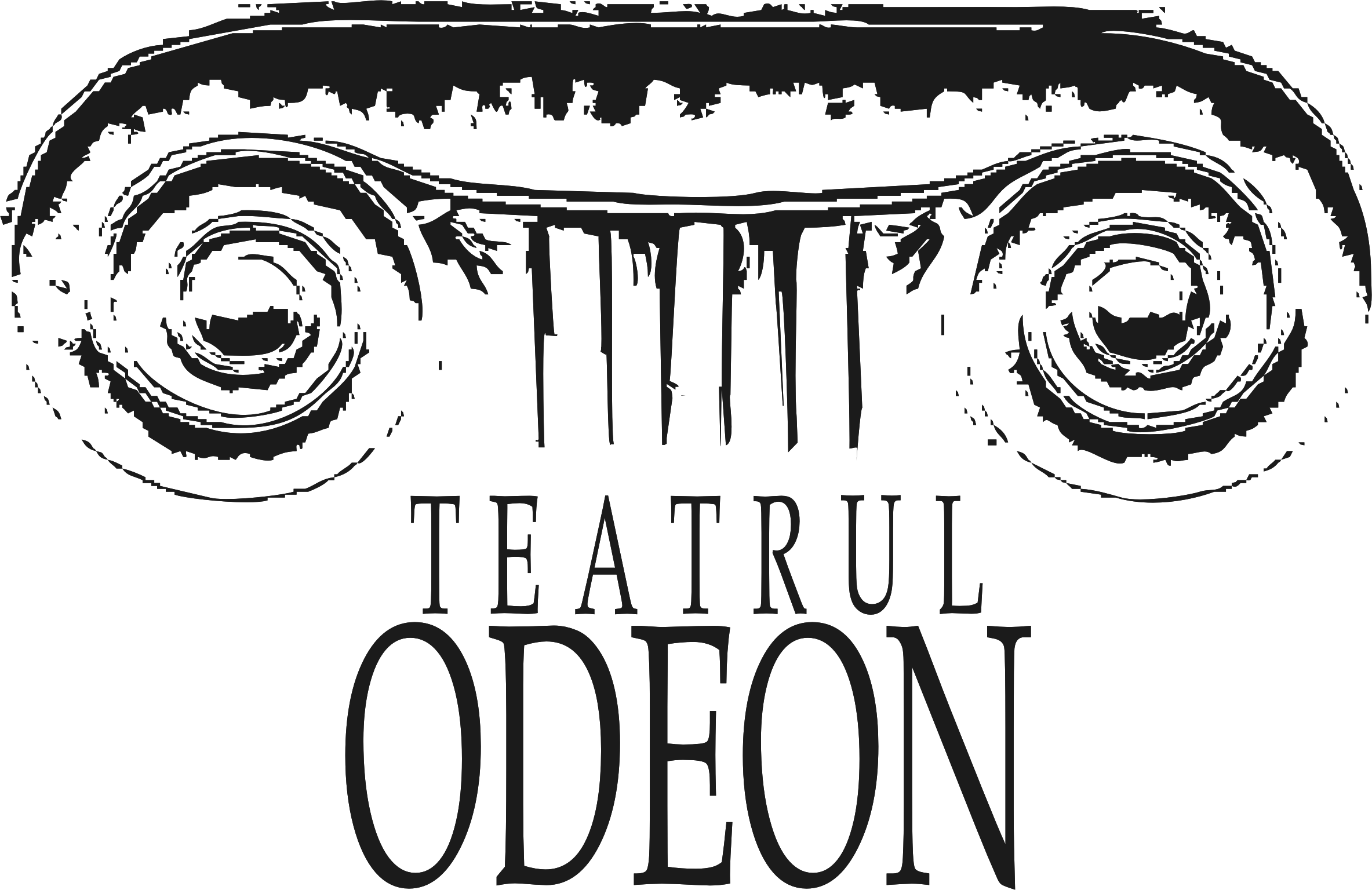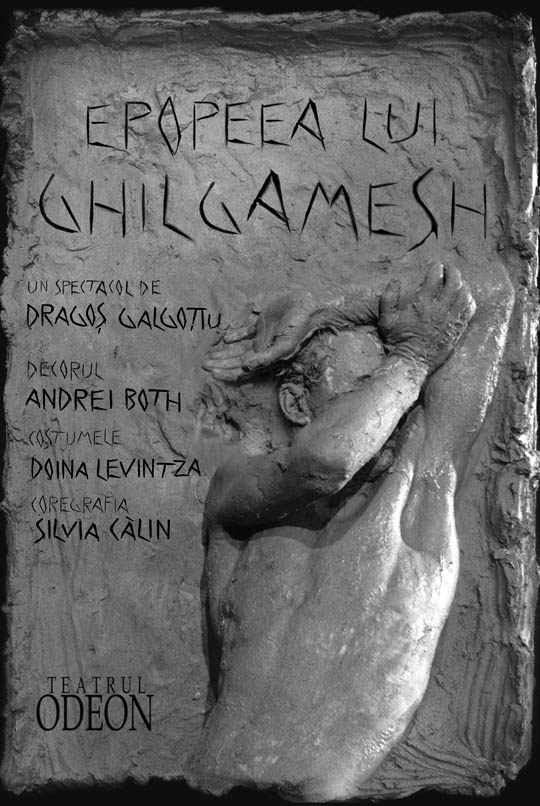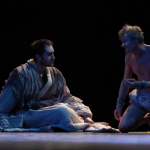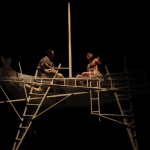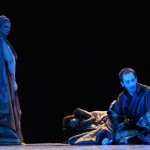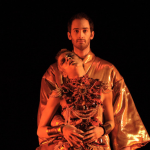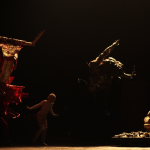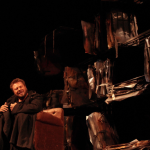directed by Dragoș Galgoţiu
Gilgamesh: Tudor Aaron Istodor
Enkidu: Istvan Teglas
The Blindman: Gabriel Pintilei
The Death Demon: Ionel Mihăilescu
Ninsun: Oana Ștefănescu
Shamash: Dan Bădărău
Ereshkigal: Camelia Maxim
Ishtar: Ana Ularu
The Shepard: Radu Iacoban
Utnapishtim: Constantin Cojocaru
Urshanabi: Laurenţiu Lazăr
Scorpion Man: Mugur Arvunescu
Ishkara: Diana Gheorghian
Anu: Paula Niculiţă
Huwawa: Tiberiu Almosnino
Bull of Heaven: Ionuţ Kivu
Shamhat: Meda Victor
The Groom: Adrian Nicolae
The Bride: Mălina Tomoiagă
Aruru: Raluca Vermeşan
Siduri: Ada Condeescu
Tammuz: Alin State
A performance by: Dragoş Galgoţiu
Stage design: Andrei Both
Costumes: Doina Levintza
Choreography: Silvia Călin
Sculptures: Alexandru Rădvan
Translated by: Mihaela Crețu
Tudor Aaron Istodor – Award for Debut in acting, granted by Bucharest City Hall, 2009
Photos by Mihaela Marin
Press reviews
In The Epic of Gilgamesh I rediscovered Dragos Galgotiu. A different Dragos Galgotiu, who managed like an alchemist to select from the most complicated and strong essences, the simplicity. The simplicity of the fundamental story about life and death, about the begining and the end, about the absolute and the all-mighty nothing. It is very difficult and risky to approach a text that crossed milleniums, from which remained only fragments, and where it pulsates our reason itself to exist or not to exist.
The mental and emotional exercise that Dragos Galgotiu gave us to reflect upon is amazing.
The performance, although it has to support a complex text, with references to deep cultural concepts, has a visual continuity and an impressive stage design (signed by Andrei Both), which leaves room for the characters’ wide gestures, with imposing sculptural apparitions.
I think we need performances like this, which are against the current. I think we need to go back from time to time to the origins of theatre. I think we need directors like Dragos Galgotiu who follows an idea in which he believes without compromise. I think we need actors to remind us where their art is coming from.
